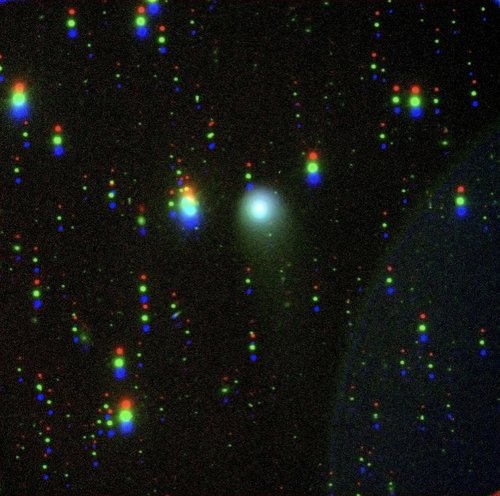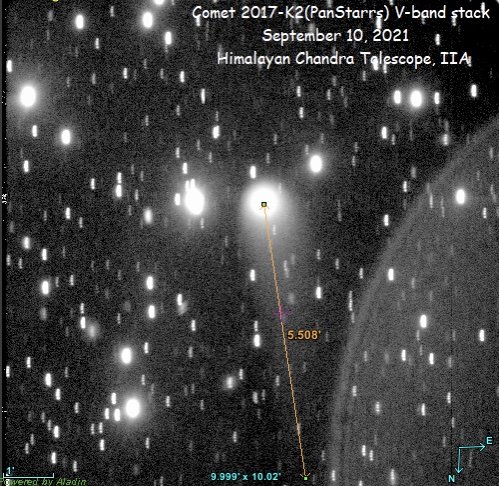Comet C/2017 K2 (PanSTARRS)
In the framework of our program of Oort cloud comets observations, we have observed this interesting comet, assumingly the brightest comet ever detected -- it was even called the “Comet of the Week” on June 6 last year. It was discovered in 2017 by the Pan-STARRS program at a distance beyond Saturn (16.1 au to the Sun) and it was already active with 130,000-km-wide coma (10 times Earth's diameter).


Some comparisons have already been made with the giant comet Hale-Bopp, which flew by in 1997 and is considered one of the brightest comets of modern times. However, it's still too early to tell if K2 truly is of a similar size or if it will shine as bright as Hale-Bopp. It is almost certainly a dynamically old Oort spike comet which has already visited our planetary zone during its previous perihelion passage millions of years ago. While the comet approaches its perihelion on December 20, 2022, it is the target of numerous studies because the long-term monitoring data is very valuable and helpful in studying the activity mechanism of comets at different heliocentric distances from the Sun. The comet should certainly reach naked-eye brightness, perhaps even 5th magnitude.
We have observed it on 10th September in 3 filters: B (3x300sec), V (4x240sec), and R (4x120sec) to create the RGB – the `true’ colour image. Our observations revealed extended 1.2’-wide coma and at least 5.5’-long tail. At its distance of ~5.412936 AU, the coma is ~282,660 km, and the tail is about 1 million 300 thousand-km long. Interestingly, last September the length of the tail was about 800,000 km.